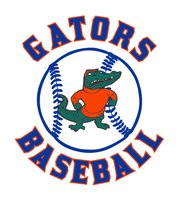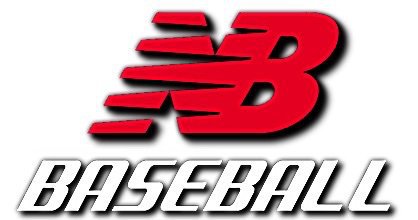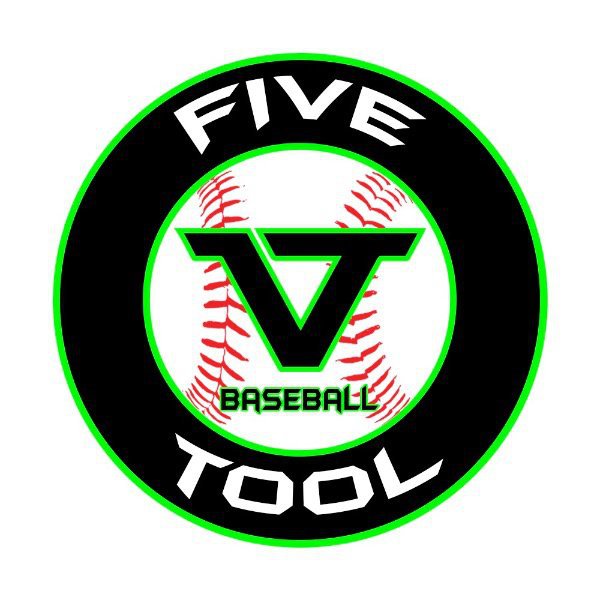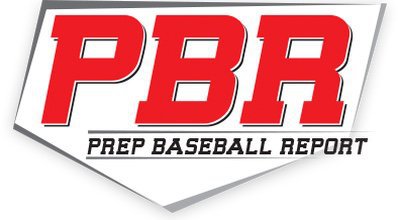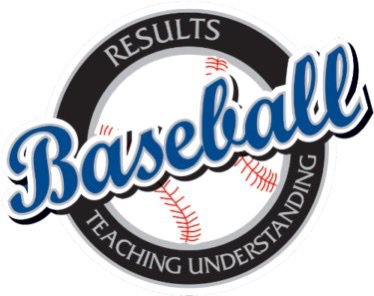










2026 College Commitments:
Mason Holleman / Azle - East Central University
Tuesday October 21st 2008
by: Bob Howdeshell
High School Baseball Web
The statement above is a common one used on this web site. It means that a player should hustle and give his best effort every time he steps on the field. That includes practice and games.
Because You Never Know Who’s Watching
This past weekend I was fortunate enough to be allowed to sit with several college coaches as they evaluated talent at a very good high school baseball tournament. This was a small tournament with only six invited teams, held at a major division 1 college campus. A “showcase” tournament.
No player’s names are being used, no teams are being mentioned and I will try to stay as generic as possible with the description of these players. The focus of this article is to make a point, not to embarrass any particular player.
The following are some of the comments and discussions that I was allowed to listen in on:
If you think that college coaches and professional scouts do not notice the “little things” you are mistaken. As one coach told me …. “We have to pay attention to each of the intangibles, it is the only real separator between some of these guys.” He went on to explain that each recruiting year they will have several players on their board that are essentially equal in athletic skills and ability. What then makes the difference is the “Little Things.”
- The first involves a player with a “national reputation” listed as a top prospect in several sources that I am familiar with. He is a position player. The coaches were in agreement that this player had several nice tools …. Good arm strength, good glove and good speed. The question that each of them had was his ability to hit at the upper end of college baseball.
Some coaches told me that the solid tools that the player had would make him a prospect to them even without “plus” hitting abilities.
What happened next amazed even me. The player was struggling with his bat but showed flashes of an “upside.” However on defense the player did not move well. Did not show good anticipation, did not follow foul balls (showing a jump). More often than not only moved from his position if he was involved in the play.
Some of the coaches REALLY did not like the “lazy” (their words – not mine) attitude shown. On a couple of stolen base attempts (where the player was covering the bag) he did not make an attempt to stop a “less than perfect” throw. Basically he flagged at the ball and got out of the way.
One coach told me that he wanted players that were interested in “sticking their nose in there and getting dirty.” This coach is with a team that would be considered a “national power.”
Some of the coaches told me that they would have to see the player again – later this summer before making any decision regarding a potential scholarship offer. Other coaches told me that they probably would not pursue this player any further.
- Next Up - A right handed pitcher that was throwing solidly in the upper 80’s. He has a slight movement on his fastball, an okay breaking ball and a fair change-up.
This player however did impress many of the coaches. WHY ????
He did not have his best control at times. At times was getting penalized by a “moving” and small strike zone, and had 5 errors made behind him, by his defense.
What caught the coach’s attention was his ability to battle and keep challenging the hitters. He did not drop his head or slump his shoulders when things went against him. He showed no expression when a ball was called on an obvious strike.
He even went so far as to walk over and speak to his second baseman, after a costly error and then pat him on the back as he walked away. The coaches I was sitting near did not miss this!
Each of the coaches that I spoke to admitted that they did not have the player on their lists of potential recruits. Each also said that they would be making a point to see the player pitch again this summer.
This player became a prospect with several “big time” schools on a day when he was the losing pitcher and did not have his best stuff. Because of his attitude and the heart he showed.
- Third Example: Is a big first baseman. This young man does not run like a gazelle, does not have a great arm. (average at best) He is not what you would term “athletic” but he is not fat. However he made points with several of the coaches in attendance.
Of course you have guessed it by now …. The young man can hit with the best of them.
There is a little more to the story though. He can hit to all fields with power. He displayed a good ability to “go with a pitch.” He showed a good knowledge of the strike zone. I personally did not see him chase a bad pitch.
With runners on second and third and no outs in a one run ball game this young man hit a ground ball to the right side of the infield. He did this with a 2-strike count. He made an out and the run scored. He did his job for his team.
He hit a home run or two over the weekend, a double or two to the spacious gaps, had several “screaming” singles, but more importantly he hustled!
This player ran hard on and off the field, every inning He did not quit as most of his teammates did in a blow out loss at one point in the tournament. As one pro scout commented to me …. “A “player” never changes his game, no matter what the score. A “player” plays as hard if his team is behind seven runs or ahead seven runs, or if his team is in a one run ballgame."
So the next time you think that it doesn’t matter how you hustle or present yourself maybe you should revisit that part of your game. As another coach told me … “A player can hustle and give his maximum effort even on a day when he and/or his team is not playing their best game. It doesn’t take any athletic ability to hustle.”
WOLFORTH THROWING MENTORSHIP: ARTICLE 28
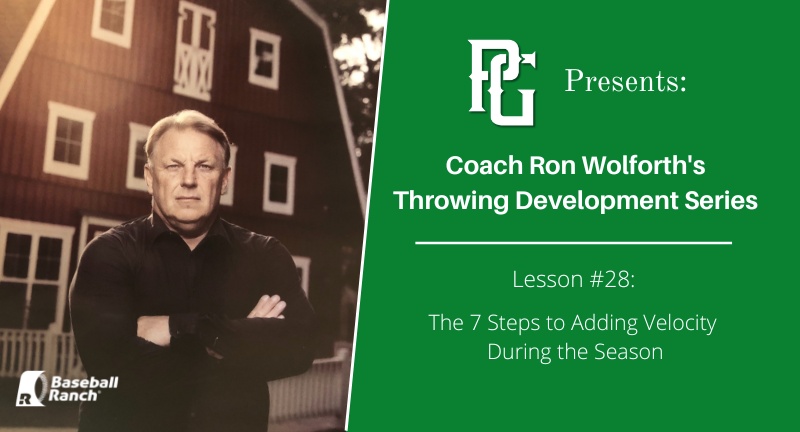
The 7 Steps to Adding Velocity During the Season
Without question, by far the best time to build capability and velocity is during the off-season. This may seem obvious, but I have found that many young athletes, their parents, and their coaches struggle to articulate exactly why this is true. I believe understanding this scenario can be very impactful in forging a productive path forward. Let’s start there.
Let us use a non-baseball-specific example to bring awareness and clarity to the process. If we were wanting a method to increase our personal best bench press, for example, we certainly wouldn’t max. out our bench press every single day in the weight room. Following that schedule, in no time at all, we would either plateau very quickly, go backward, or even possibly become injured. Instead, we would cycle our bouts of work so we push, and then we would give our body time to recover. Our work would be designed around maximizing our body’s ability to adapt and accommodate. Cycling your work is extremely important.
Developing velocity is no different.
The off-season schedule is nearly always far more conducive to structuring those cycles of work and recovery. During the competitive season, our cycles are specifically designed around maximizing game time performance. If we need to alter or shape our schedule in the off-season, we can simply add or subtract with few consequences or challenges. However, during the competitive season, all changes and dynamics of the games themselves greatly influence and dictate our schedule.
Many people make the mistake of thinking the key to increasing throwing velocity is “the push”. However, the push is only half of the equation. The vitally important second portion is the “recovery”. We refer to recovery as the time required for your body/arm to return to a state of full functionality.
If and when your body is in a depleted state, your next push is often not going to have its desired effect and can actually have a deleterious one. If you want to gain velocity DURING the season, you are going to have to be very intentional and aware in your process. The greatest challenge in gaining velocity during the season is managing your body’s cycle of recovery because during the season, “managing your cycle” becomes far more complex. Successfully coping with the chaos of baseball season can, in fact, be accomplished, but it will require diligence and adjustment.
With that in mind, let’s talk about 7 steps we would recommend in attempting to safely gain velocity DURING the season. Remember that being aware of and honoring the natural cycle of recovery, as well as being very judicious when adding any additional stress to the system, is of incredible importance.
1. The body can only recruit what is awake and available. Therefore, if you are trying to gain velocity during the season, step #1 is to slightly increase your wake-up/warm-up in both duration and intensity. I often ask my pitchers, “If you absolutely had to throw a baseball 100mph, how much of your body do you need to be awake and available?”. They almost always immediately answer, “ALL of it!”. That is, in our opinion, the correct answer. In reality, very few players train or play with ZERO warm-up, but also very few players’ warm-ups are exceptional or world-class. Improving your wake-up/warm-up will not only assist your capability potential, but it will also assist and support you in improved recovery
I previously stated “slightly increase” for a reason. If an athlete went from a poor or marginal warm-up process and immediately attempted to make it world-class, it almost assuredly would represent too much of a change, and most would probably have a negative effect. Therefore, our recommendation is each week to slightly increase the quality of the warm-up until you are totally confident that your specific warm-up process is exceptional, and your entire body is ready to perform at peak intensity.
I warn you… Do not ever underestimate the power of having the body fully prepared. Some will ask me for a specific list of things to do. My response is there are literally hundreds of very solid and effective warm-ups available online. The keys are – the warm-up is full body, dynamic, and prepares the body for full range of motion (ROM), rotation, and quick change of direction. I would even recommend having multiple warm-ups in your menu/toolbox to keep it fresh.
2. Become a better mover. Step #2 is to improve and augment your agility, coordination, and motor control. Maintain the strength and stability gains you made during the off-season and the intensification phase. If strength and/or stability were a constraint, really drill down during the season on core strength, scapular strength/stability, single-leg dynamic stability on both legs (to minimize energy leaks) and strengthen the flexors of the forearm. These are slightly more skill-specific and don’t tax our recovery nearly to the degree that more traditional strength options do.
If mobility and flexibility are personal constraints, continue to improve the “biggies”, such as ankle mobility, hamstring flexibility, hip mobility, t-spine mobility, and shoulder mobility.
Not only will becoming a “better mover” support your efforts to increase velocity in the season, it will also enhance your ability to recover. We say at the Ranch all the time, “Better movers make better athletes, and better athletes make better, more durable, more dynamic, more explosive pitchers.” Becoming a better mover doesn’t further tax the arm, therefore step #2 is a no-brainer if one wishes to gain velocity during the competitive season.
3. Become a more effective and efficient decelerator. If you want your body and arm to speed up, then we should first enhance your ability to effectively and efficiently slow your arm down. The late Dr. Mike Marshal was known for the saying, “The body will only accelerate as efficiently as it can decelerate.” For the most part, I believe he was absolutely correct. While an athlete may be able to “survive” for a time with poor patterns of deceleration, it will only be a matter of volume at high speeds before consequences begin to show up (typically in the posterior shoulder and lateral elbow). The body is incredibly intuitive and intelligent; it works very hard at protecting us from harm, even the self-inflicted kind. If the body believes that the arm’s acceleration exceeds its ability to stop without severe consequences, it will simply restrict its acceleration.
Bottom line: If you want to increase your throwing velocity during the season… Enhance your ability to safely slow down your arm.
The great news is that “deceleration work” can be done at lower intensities and can be included in arm care, ramp-up, and post-throwing. Unfortunately, some pitchers are completely unfamiliar with deceleration work, the Durathro Sock™, the bell club, the Handspeed Trainer, or other similar variations on theme. In my 20+ years of doing high-speed video analysis of pitchers, only about 30% have what we would consider highly efficient patterns of deceleration. And for a predominance of those who are less efficient, their inability to slow down their arm without additional trauma to soft tissue is a major contributor to their challenges in adding velocity.
4. Experiment with finding your ideal rhythm and tempo. Far too often, in our opinion, a young pitcher’s tempo and rhythm are dictated by his parent, instructor, or coach. In my 30+ years of experience in training pitchers, I will tell you that ideal tempo and rhythm are very personal things. This is true, not only in baseball pitching, but also in golf, serving in tennis, or shooting a basketball. Roy Oswalt and Pedro Martinez were very quick and up-tempo. Daisuke Matsuzaka, Luis Tiant, and Johnny Cueto were very slow. They were ALL exceptionally successful.
I cringe when I see coaches forcing a specific tempo that looks “pleasing” to the parent’s, instructor’s, or coach’s eye. It’s fine to start with a set tempo, but then the athlete should be encouraged to experiment with speeding up and slowing down from that standard to see which tempo he prefers. We highly recommend listening to music that is pleasing/enjoyable to the pitcher while they experiment. There is just something about music that allows us to find a tempo and rhythm that fits us. Discovering a personal ideal tempo can help unlock some latent and untapped athleticism.
5. Experiment with loading and unloading the posterior chain. There are dozens of opinions and theories on how to best and most effectively increase the utilization of the legs, hips, and trunk. Discussing and debating these would require at least a two-part discussion in itself. Our point here is that between starts or outings, working specifically on improving the loading and unloading of the pelvis can be very beneficial, and can be accomplished with very little additional stress to the arm. Always remember that while the action of the arm is important, the arm is primarily the delivery mechanism for the legs, hip, and trunk.
6. Enhance your internal systemic processes of what and how much you eat (nutrition), what and how much you drink (hydration), and how much quality sleep you get every night. This is pretty straightforward and self-explanatory. That being said, we see young people regularly stumble in these areas and then wonder why they struggle in gaining velocity. Possibly because it is simple in theory… Young people fail to take these processes seriously. (Especially the sleep component.) If you want to gain velocity during the season, make certain you are hydrated, eating well, and getting 8+ hours of sleep every night.
7. Let it eat… More often. And finally, make it a habit that, on a regular basis after a thorough warm-up and your arm is feeling good, to finish your throwing with 3-5 throws that you “let the horses run”. In other words, every day that makes sense in your cycle to do so, allow the body and arm to operate at near maximal effort for 3-5 reps. Paul Nyman of SETPRO coined a phrase by the father of biomechanics, Nikolai Bernstein (Nyman called it the “Bernstein Principle”). It states, “The body will organize itself based upon the ultimate goal of the activity.” Therefore, for your body to organize itself for velocity, it needs to be a regular goal. In other words, we will rarely (if ever) throw harder by throwing sub maximally as a daily habit, and then once every seven days, try to set a new PR in a game. Excellence is a habit. Therefore, we are what we repeatedly do.
Coach Ron Wolforth is the founder of the Texas Baseball Ranch® and has written six books on pitching including the Amazon Best Seller, Pitching with Confidence. Since 2003, The Texas Baseball Ranch® has had over 543 pitchers break the 90mph barrier, 194 have topped 94mph or better, and 129 students have been drafted in the MLB’s June Amateur Draft. Coach Wolforth has consulted with 13 MLB teams, dozens of NCAA programs and has been referred to as “America’s Go-to-Guy on Pitching” and “The Pitching Coaches Pitching Coach”. Coach Wolforth lives in Montgomery, TX with his wife, Jill. They are intimately familiar with youth select, travel baseball and PG events as their son Garrett (now a catcher in the Arizona Diamondbacks organization) went through the process. Garrett still holds the PG Underclass All-American Games record for catcher velocity at 89mph which he set in 2014 at the age of 16.
WOLFORTH THROWING MENTORSHIP: ARTICLE 58

Where Does Your Pitcher Rank?
Velocity Perspective: What Matters, What Doesn’t, and What to Watch Out For
If you’d been away on a space mission for the past 50 years and just landed back on Earth, you might be stunned by how much more weight is given to velocity in today’s competitive baseball landscape compared to the 1970s.
Truth is, velocity has always been coveted. But with the rise of radar guns in every dugout and technologies like Trackman® giving instant feedback on pitch data, velocity has evolved from being just one desirable quality into a central metric that often defines a pitcher’s value, future opportunity, and status…sometimes even more than it should.
It’s not hard to see how we got here. In a playoff game between the Yankees and Rays in 2020, the average fastball velocity of that game hit a record 97.1 mph. Imagine that!. As someone who grew up idolizing guys like Bob Gibson, Sandy Koufax, and Nolan Ryan, I can tell you… even I had a hard time wrapping my head around that number.
And I don’t see the trend slowing down anytime soon.
With the obsession around velocity continuing to intensify, it’s no surprise that myths, misinformation, and anxiety have crept in, especially among parents wondering how their Johnny stacks up when it comes to mound time, college recruiting, or draft buzz. Velocity is often, fairly or not, right in the middle of those conversations.
So, as someone who’s spent over 30 years training pitchers…with 141 draft picks and hundreds of scholarship athletes coming through our doors…allow me to offer some perspective. Consider this a grounding reminder, especially if you’re starting to feel overwhelmed or uncertain.
Lesson #1: The 8–14 Age Range Is a Fragile Window
Let’s get something straight from the beginning. At the Texas Baseball Ranch®, we absolutely support developing a powerful, healthy arm at any age. But chasing radar gun numbers or obsessing over them during ages 8 to 14? That’s a very dangerous game.
It’s tempting, I get it. But here’s why we strongly caution against it…
• No one earns a college scholarship or gets drafted at 10–14 years old. Yes, a few freshmen or sophomores might get early verbal offers. But make no mistake, those offers aren’t binding. Whether or not they hold up depends on how that athlete performs during the spring and summer of their junior year. Unfortunately, every year we meet seniors who thought their recruiting process was behind them, only to find out it's just beginning. Those are tough conversations, and my heart breaks for those families.
• Physical development is wildly inconsistent. I’ve seen 12-year-olds throwing in the upper 70s who plateau at 82 by age 17… and others who topped out at 58 mph as preteens only to eventually hit 90+ and pitch in the big leagues. No one has ever asked me how good I was at 12, and that’s because everyone instinctively knows that performance at that age isn’t directly predictive of success later on.
• Soft tissue is still developing. That means pushing for max-effort throws at high volumes can be a fast track to injury. We see it all the time, young athletes racing up the wrong mountain, only to discover the summit doesn’t offer what they hoped. Some stress is necessary for adaptation, yes, but the dosage, frequency, and duration must be carefully managed. It’s not about avoiding effort, it’s about applying it with precision and patience.
In the frenzy to chase velocity, we often overlook four other vital components of development, areas that usually deserve more attention, especially in young throwers.
1. Pain and discomfort should always come first. If a pitcher is in pain, chronic or acute, our top priority must be eliminating it. Gains don’t stick when the arm isn’t healthy. Velocity should never come before durability.
2. Recovery is a red flag. Big swings in velocity or inconsistent performance often point to a recovery problem. If recovery is poor, everything else will eventually break down.
3. Command keeps pitchers in the game. Velocity might get you noticed, but command keeps you pitching. Throwing hard doesn’t mean much if you can’t throw strikes or if you’re constantly behind in the count.
4. Stuff, spin, and deception are essential to long-term advancement. Plenty of guys have hit 95+ on the gun but never advanced because they didn’t miss enough bats. Getting swings and misses…neutralizing the barrel…is what separates pitchers who flash from those who last.
Lesson #2: Where You Live Matters (Even If It Shouldn’t)
It might sound strange, but 85 mph doesn’t mean the same thing in every part of the country.
A 17-year-old in Kimball, Nebraska who throws 85 may be seen as an absolute stud… while the same velocity in Houston, Miami, or Southern California might barely raise an eyebrow. We all tend to gauge ourselves relative to those around us. And that can either inflate or deflate our true perception of ability.
So parents, keep perspective. Don’t get too high or too low based on where your son stacks up regionally.Look broader, zoom out, and remember, this is a long game. One game, one tournament, one radar reading doesn’t define anything.
So How Hard Is “Hard Enough”?
Here’s how we currently assess velocity benchmarks by age at the Ranch. These aren’t absolutes, but they give you a helpful sense of where your athlete stands and where the real constraints may lie.
12 Years Old:
<55 mph: Significantly behind
56–60 mph: Slightly behind
61–64 mph: On track
65–69 mph: Slightly ahead
70 mph: Significantly ahead
13 Years Old:
<60 mph: Significantly behind
61–65 mph: Slightly behind
66–71 mph: On track
72–75 mph: Slightly ahead
76 mph: Significantly ahead
14 Years Old:
<68 mph: Significantly behind
69–73 mph: Slightly behind
74–79 mph: On track
80–83 mph: Slightly ahead
84 mph: Significantly ahead
15 Years Old:
<72 mph: Significantly behind
73–78 mph: Slightly behind
79–82 mph: On track
83–86 mph: Slightly ahead
87 mph: Significantly ahead
16 Years Old:
<75 mph: Significantly behind
76–80 mph: Slightly behind
81–85 mph: On track
86–89 mph: Slightly ahead
90 mph: Significantly ahead
17 Years Old:
<80 mph: Significantly behind
81–83 mph: Slightly behind
84–87 mph: On track
88–91 mph: Slightly ahead
92 mph: Significantly ahead
18 Years Old:
<82 mph: Significantly behind
83–85 mph: Slightly behind
86–89 mph: On track
90–92 mph: Slightly ahead
93 mph: Significantly ahead
19–22 Years Old:
<84 mph: Significantly behind
85–87 mph: Slightly behind
88–92 mph: On track
93–95 mph: Slightly ahead
96 mph: Significantly ahead
What It All Means
Velocity matters. It opens doors. It creates opportunities. But it’s just one piece of a much bigger puzzle.When pursued recklessly, especially too early, it can do far more harm than good.
Our goal isn’t to stir fear or discourage ambition. We’re here to bring clarity, context, and a long-term approach that prioritizes each athlete’s health and development. Let the radar gun inform your progress, not define your identity. And if your numbers are ahead of the curve, great but don’t let that success pull your attention away from the other skills that truly drive advancement at the next level.
Personally, I believe a smart and sustainable goal for any aspiring college or professional pitcher is to reach and stay in the slightly ahead category…while also developing a durable, healthy arm, commanding the baseball at a high level, building elite secondary pitches, and recovering well between outings.
In my 30+ years of experience, chasing the significantly ahead category at all costs has led to far more pain, injury, frustration, and disappointment than it has to lasting success. Yes, velocity can help but successful pitching at the higher levels is about so much more than a number on a radar gun.
But what if you're currently behind for your age group, either slightly or significantly? First, welcome to the club. Far more pitchers are behind in velocity than ahead. You’re not alone.
Second, where you start is never where you have to finish. As of this writing, we’ve had over 650 athletes at the Texas Baseball Ranch® touch 90 mph.
Now, without question, some of those players were going to hit that milestone with or without us. But many of them reached it because of the structure, support, and mentorship they received here. The point is, progress is possible…real, measurable, meaningful progress, even if you’re starting from behind.
No matter where you currently stand, you are not fixed. You’re not stuck. You can improve your standing. You just need a system that meets you where you are and guides you with precision through the next steps in your pitching journey.
And always remember…yes, the radar gun is easy to see, but the real work... and the real rewards... live in everything that number doesn't show.
The topic of velocity sits just below politics and religion in terms of how much heat and emotion it stirs up. But our goal at the Ranch is always the same: to help you sort fact from fiction and make the most informed, thoughtful decisions possible.
Until next time…
Stay curious and keep reaching for the stars,
Coach Ron Wolforth
Coach Ron Wolforth is the founder of The Texas Baseball Ranch® and has authored six books on pitching, including the Amazon Best Seller Pitching with Confidence. Since 2003, The Texas Baseball Ranch® has had141 of their players drafted, and 651 have broken the 90 mph barrier. Coach Wolforth has consulted with 13 MLB teams, numerous NCAA programs, and is often referred to as “America’s Go-To Guy on Pitching.”
Coach Wolforth lives in Montgomery, TX with his wife, Jill. They are intimately familiar with youth select, travel baseball and PG events as their son Garrett (now a professional player) went through the process. Garrett a former catcher in the Cincinnati Reds and Houston Astros organization still holds the PG Underclass All-American Games record for catcher velocity at 89 mph which he set in 2014 at the age of 16.
Monday, December 8, 2008
Baseball Only?

RT Staff Note: We occasionally scour Rivals message boards and came across a subject on NorCal Preps, one of the country's most active high school baseball message boards in the off-season. Maybe they are more computer and web site centric there because it's the center of the Silicon Valley, but a thread started a few days ago asking what a high school aged player should do in the off-season and nearly 40 posts later, the issue is still alive. The issue morphed into...should an athlete concentrate on baseball year round? We wish that more high school message boards would be this active. Rivals College Baseball board is arguably the most active baseball board in the off-season, but NorCal Preps had more responses to this one thread in three days than most high school baseball web sites have over the entire 3rd and 4th quarter months. Over the next few days, we will post our answers and comment on the entire subject...The following is our initial answer. For the entire thread, go to NorCal Preps Baseball Board.
The answer to your question depends on the ability, desire and goals of the player. For the purposes of this post...I will concentrate on High School only.
If a player desires to play baseball with a D-I college and has the ability, desire and work ethic to accomplish that, the choices are simple...play baseball and only play baseball...
If they want to play basketball, football, golf, tennis at the next level...the answer is the same...play only that sport, unless the athleticism of that player is so off the charts that no matter what they do, they will be recruited and sign with a college team. In conversations with D-I college coaches, it's pretty unanimous. They want dedicated, hard nosed, impact players. A well rounded athlete is nice, but baseball especially, is a very specialized sport. Plus, if a player favors baseball and coaches find him projectable, recruitable and a potential player that could impact their team...they may not want that player to risk injury and play football or basketball.
Great athletes don't always succeed at baseball as a part time hobby. If you look at the top 80% of college recruits in warm weather states, they all played baseball only throughout high school. There's the 20% that didn't...but stats point out that a player has a better chance of becoming better, and getting noticed, by playing more because of the plethora of available talent in warm weather states for baseball.
Now I mentioned warm weather states because in cold weather states, the option of year round baseball doesn't exist..so more players play multiple sports...and those players still get recruited and play baseball right? Right! But, unless you are a pitcher or one of those exceptional, freakish athletes like a Ryan Howard who came from a cold weather state, the level of baseball has to be put into perspective. Those players are playing catch-up and may never live-up to the talent level of an SEC, BIG 12 or Pac 10 school. Rarely does a northern school get to Omaha, get nationally ranked or have the type of OOC like a Stanford, Fullerton. LSU or Texas to prove their true rank.
That said...if a player has no desire to play at the next level or wants to try out at a smaller school or JC and wants to enjoy the total high school experience...by all means, play all sports IF you have the talent...but again, that depends on the school. You can't just walk into a Mater Dei in SoCal and tell the coach you want to play baseball, basketball and football. You'd better have credentials, a summer team coaches recommendation and a gym and field rat mentality.
There are those that believe in the total athlete, but percentages say otherwise....again if that player wants to play at the next level. If you live in California, your son is competing against a higher percentage of year round baseball players. Those year rounders will get noticed first, because they will be seen the most. And, if your son is a position player and goes to a low profile school and competes in a lesser competitive league, that decreases the chances of exposure. The next option for that player is a California based College Development Program (CDP) like Norcal, ADB, SGV Aresenal or another program that exposes that player to recruiters. And, that becomes a year round task, because many of the better camps and showcases are also in the fall and winter.
I could write for days about this subject...the bottom line is...if a player wants to play at the next level...they better step up their game to that level. Stats don't lie.
Tuesday, December 9, 2008
Baseball Only?...Day 2
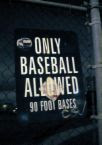
RT Staff Note: The following is our response to a thread on NorCal Preps.com that talks about the issue of whether or not players should baseball year round. The following is our take, but for the entire thread go to NorCalPreps.com Baseball Message Board. Not everyone agrees with our viewpoint. It's a great discussion and this message board is a model for other message boards, especially during the off-season.
There are a couple of interesting viewpoints and we have written about most of them in the past. We are big supporters of what we call College Development Programs. Those are programs whose main purpose is to develop, market and expose players to get seen by college recruiters. If one is to play year round ball, they must do so in the type of controlled and mentoring environment that these programs teach. Those are also the programs that recruiters tend to trust and keep coming back to, in order to fill annual roster spot needs.
One poster mentioned pitchers. We have talked about the teams that are only concerned about winning a cheap piece of plastic at the local weekend sports complex tournament. Pitchers need to stay away from those teams. A good pitcher shouldn't have to worry about over-use if he is on a good solid College Development Program that preaches development, fundamentals and puts their pitchers on strict, scheduled rotations. Most good pitchers that want to develop and strengthen their arms, throw a bullpen or two every five days in the offseason anyway...or at least they should if they want to avoid injury. Why not throw every five days against another team in the process?
Another post said that the trend is moving towards one sport. He is right and it has been that way now for most of this decade. Many high school and college coaches will be politically correct and say they like the multi-sport athlete, but as someone else on this board mentioned...in the back of their mind they want that guy all for themselves...especially if he is a difference maker.
I applaud the athletes that are good enough to play all sports and get what they want. Unfortunately, that doesn't apply to a majority of athletes. Most athletes are not wired for other sports. Some are too short or too slow for basketball and football, but dominate in baseball. Others are still developing and may need the year round repetition to get better. Others...well you get the idea. There are a lot of variables and of all the sports, baseball in our opinion is by far the hardest to master without extensive background in the sport.
For example...a majority of freshman high school football players never played football before...yet in a few short weeks, they are running plays and look fairly competent as football players. Basketball is much harder and usually requires an AAU summer league credential or two, but there are players that start later in the sport...especially if they are of considerable height and after a while, can look fairly competent as a player.
Baseball will make you look stupid at the first attempt at an at bat if you don't have the experience, passion or fundamentals of the game down pat. And that takes an inordinate amount of time. So, whereas a basketball coach may look at a 6'9" kid and say I can work with that...most baseball coaches would shy away from a kid that is that raw and will tend to default to the player that has put his many hours in on the field.
If I was from Wisconsin, I may have a different viewpoint on this subject because there is not a year round option to consider. I live in a warm weather state and warm weather states have different dynamics to consider. You can play year round here...many do play year round here...and frankly, with the Arizona Fall Classic, PG WWBA in Florida, and the plethora of college camps available to prospects in late fall and early winter in Florida, Texas, Georgia, Arizona and California, it really is in a prospects best interest to play year round if they aren't one of the few blue chippers available out there.
And that brings up another point. Blue chippers like the players you mentioned are few and far between. Of course there are exceptions...that's why they are called exceptions.
Most players in high school are still physically developing and need to get better in order to get seen...They don't have the "It Factor" just yet...and that means playing more often and under the tutelege of a good coach and being surrounded by good players. The combination of a great mentor and osmosis will help a player more often than not, but in baseball it's about time, repetition and the ability to absorb the intricacies of the game. More baseball is the only answer.
Posted by Rounding Third Staff at 1:47 AM 0 comments ![]()
![]() Links to this post
Links to this post
Wednesday, December 10, 2008
Baseball Only? Day 3

RT Staff Note: The following is our response to a thread on NorCal Preps.com that talks about the issue of whether or not players should baseball year round. The following is our take, but for the entire thread go to NorCalPreps.com Baseball Message Board. Not everyone agrees with our viewpoint. It's a great discussion and this message board is a model for other message boards, especially during the off-season. For the record, our stats on players that play only baseball come from our readers. We have received hundreds of e-mails from parents announcing their sons NLI and their sports exploits during their time in high school.
Everyone,
I think there's some confusion. We have written over 300 articles on our web site on subjects like this and we have tried to combine all of what we have written into two short posts. This subject is a sensitive one and must be spelled out and we apologize for any misunderstandings we may have caused.
First...TU mentioned the education part. We have written many times that college is an "education first" choice. A player must ask himself the following, "If baseball was not in the equation, would I go to school here?"
We do not advocate a player going to a university for the sole choice of trying to play baseball. College is one of those life long choices...a decision that will affect the rest of their lives. We have colleagues that have daughters that play collegiate softball and they do it the right way. For them, since there is no "after" after their college softball career is over, they always pick the school of their choice...and no matter how good they are, it is not always a D-I or high profile school. It's the school they WANT to go to.
Boys must approach baseball in much the same way and good CDP's really take this into consideration. There is a CDP in the Boston Area that we really admire (New England Ruffnecks) that helps place their players on some of the finest schools on the East Coast. Last season eleven of their roster of 15 signed NLI's to colleges like Brown, Vandy, Georgetown, Columbia, Holy Cross, Marist, Dickinson and more. These were good ball players that had more than baseball on their mind. That said, they were mostly year round baseball players that worked out with the Ruffnecks in their winter programs at Harvard's indoor facility. They knew that if they wanted to attend both the school of their choice AND play baseball their, they needed to show something extra.
When we say baseball only, it doesn't apply to the universe. There are exceptions. But, we ran an article last year and received e-mails from our readers that helped us come to the conclusion that over 80% of D-I signees this year and last only played baseball. The figure is nearly 95% in the sunbelt states.
Kids that are playing at this level and get recruited at this level are passionate players. Baseball is not only fun for them, it's a dream. Burn-out, as the coach said he was concerned about, usually only occurs to players that feel that they must do it to please Dad. Many recruiters and scouts usually can tell through body language and other non-verbal clues, which kids are "players" and which kids are just "playing". This is not unlike some of those basketball stories you hear about where the star player carries around a basketball like it is an extension of himself.
All athletes have a love and deep passion for their main sport. And, let's give kids some credit. They also know what they need to do to achieve those goals that they may have in life. The Barry Bonds of the world have that swagger and confidence built in to their DNA. He felt confident enough about his baseball game that he knew he could play football and basketball and still play his game of choice at the next level.
Other athletes don't have that built in to them and let's give them credit for making the choices to play year round to achieve their dreams. Sports are not unlike other choices kids make to get to their next level dream. A student that wants to get into Harvard or Stanford, makes school and studying his year round activity. He has to show extracurricular activities, enroll in AP classes, and then gets tutors in the summer for SAT testing, so that they can compete against the braniacs of the world where a 2300 on the SAT is not enough.
As stated earlier, we could write for days on this subject and have. The one thing everyone must realize is while there are exceptions, many ball players that play at the next level aren't always the sure bet. They are still growing and developing and know what they must do to achieve their goals...especially in the highly competitive areas in the sunbelt states. In the sunbelt states, it's not always a level playing field like it is in many cold weather states.
Our advice is for the developing, growing, "projectable" players...not the sure-fire stud. Stats show that these kids benefit by playing more. Make sense?
